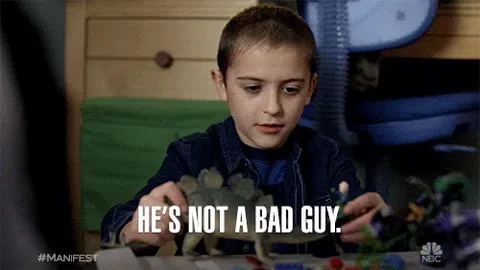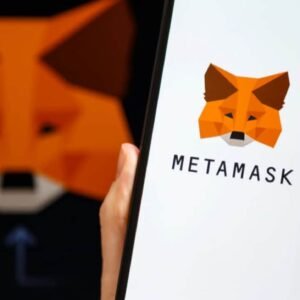Introduction
The internet thrives on creativity, and memes have become one of the most pervasive forms of cultural expression. From relatable humor to biting social commentary, memes shape online conversations in profound ways.
However, behind the viral laughs and shares lies an increasingly relevant issue: the ownership of these works of art. One recent example is the story of the “Not a Chill Guy Anymore” meme artist, whose struggle has highlighted the complexities of copyright in the digital age.
This blog post will delve into the copyright battle surrounding this meme, exploring the artist’s journey, the legal intricacies of meme ownership, and what this case means for the future of creative rights on the internet. By the end, you might find yourself questioning whether memes are simply public property—or whether they belong to their creators.

The Rise of the “Not a Chill Guy Anymore” Meme
Memes often emerge from humble beginnings, and the “Not a Chill Guy Anymore” meme was no exception. Created by an independent digital artist, the meme featured a humorous illustration of a character lamenting their loss of “chill” due to modern life’s stresses. With its minimalist style and relatable tone, the meme gained traction on social media platforms, especially Twitter and Reddit.
While the artist originally posted the meme to showcase their work, it quickly took on a life of its own. Users began sharing and adapting the image to suit various situations, from work stress to political commentary. Its viral nature brought the artist both visibility and frustration as their creation was widely reposted without credit.
This widespread, uncredited use planted the seeds for a copyright battle that would later unfold. As the meme evolved into a cultural phenomenon, questions arose: Who truly owned the meme, and how could its creator protect their rights?
Legal Challenges: When Art Goes Viral
When memes go viral, they often blur the lines between public domain content and intellectual property. The “Not a Chill Guy Anymore” meme sparked legal debates about how copyright laws apply to digital art, particularly when it is transformed or reposted without permission.
The Creator’s Dilemma
The artist faced a common issue: viral fame didn’t translate to financial compensation or recognition. Despite the meme being shared across high-traffic platforms and even used in commercial campaigns, the artist saw little to no monetary benefit. This is not uncommon; many creators find themselves powerless as their work is consumed by the internet’s boundless appetite.
Feeling exploited, the artist decided to pursue legal action. They filed a copyright claim against several companies that had profited from merchandise and advertisements using their meme. This decision marked the beginning of a challenging battle to assert their rights.
The Legal Framework
Copyright law generally protects original works of art, including illustrations, from unauthorized use. However, enforcing these rights becomes tricky when dealing with internet culture. Memes, by their very nature, thrive on remixing, parody, and transformation—concepts often protected under “fair use.”
The companies targeted in the lawsuit argued that their use of the meme fell under this legal doctrine. They claimed that by modifying the original illustration or using it in a humorous context, they had created something new and transformative. This defense has been both a shield and a loophole for those looking to exploit creative works.
Cultural Implications of the Copyright Battle
The copyright battle of the “Not a Chill Guy Anymore” meme artist has ignited broader discussions about the value of digital art and the rights of creators in the meme economy.
Creators vs. the Internet
In an age where content is consumed in seconds and shared in milliseconds, the internet often treats creative works as communal property. This mindset can harm artists who depend on their work for a living. The “Not a Chill Guy Anymore” case is emblematic of the tension between creators seeking acknowledgment and an audience that thrives on free, accessible content.
Many creators argue that failing to credit artists perpetuates a cycle where their labor is undervalued. On the other hand, internet users and meme enthusiasts often see sharing as an act of appreciation, not theft.
Memes as Modern Folk Art
Some argue that memes are a form of modern folk art, inherently communal and evolving through collective input. Under this lens, the “Not a Chill Guy Anymore” meme belongs to the internet rather than its creator. However, others contend that this perspective undermines the labor and creativity that go into making these viral sensations.
What This Battle Means for the Future
The resolution of this copyright battle could have far-reaching implications for meme culture and the rights of digital artists.
Establishing Precedent
If the artist wins their case, it could set a legal precedent that strengthens the position of creators in protecting their work online. This might lead to stricter enforcement of copyright laws and encourage platforms to develop tools for crediting and compensating artists.
However, such outcomes might also stifle the free-flowing creativity that makes memes so unique. Striking a balance between protecting creators and preserving internet culture will be a critical challenge for policymakers and stakeholders.
Rethinking Fair Use
This case has also sparked discussions about the scope of fair use in the digital age. Should companies profit from memes without compensating their creators? At what point does transformation cross the line into exploitation? These questions are becoming increasingly urgent as the internet continues to evolve.
Conclusion
The copyright battle of the “Not a Chill Guy Anymore” meme artist is more than just a legal dispute—it’s a cultural reckoning. It forces us to reconsider how we value creativity in the digital age and what it means to be a creator in a world that thrives on sharing.
As this case unfolds, it has the potential to reshape how memes and digital art are perceived and protected. Whether you’re an artist, a meme enthusiast, or simply someone who loves a good laugh, this story highlights the complexities of modern creativity.
What do you think? Should meme artists have stronger protections, or does internet culture require a more open approach? Share your thoughts in the comments below—we’d love to hear from you!






